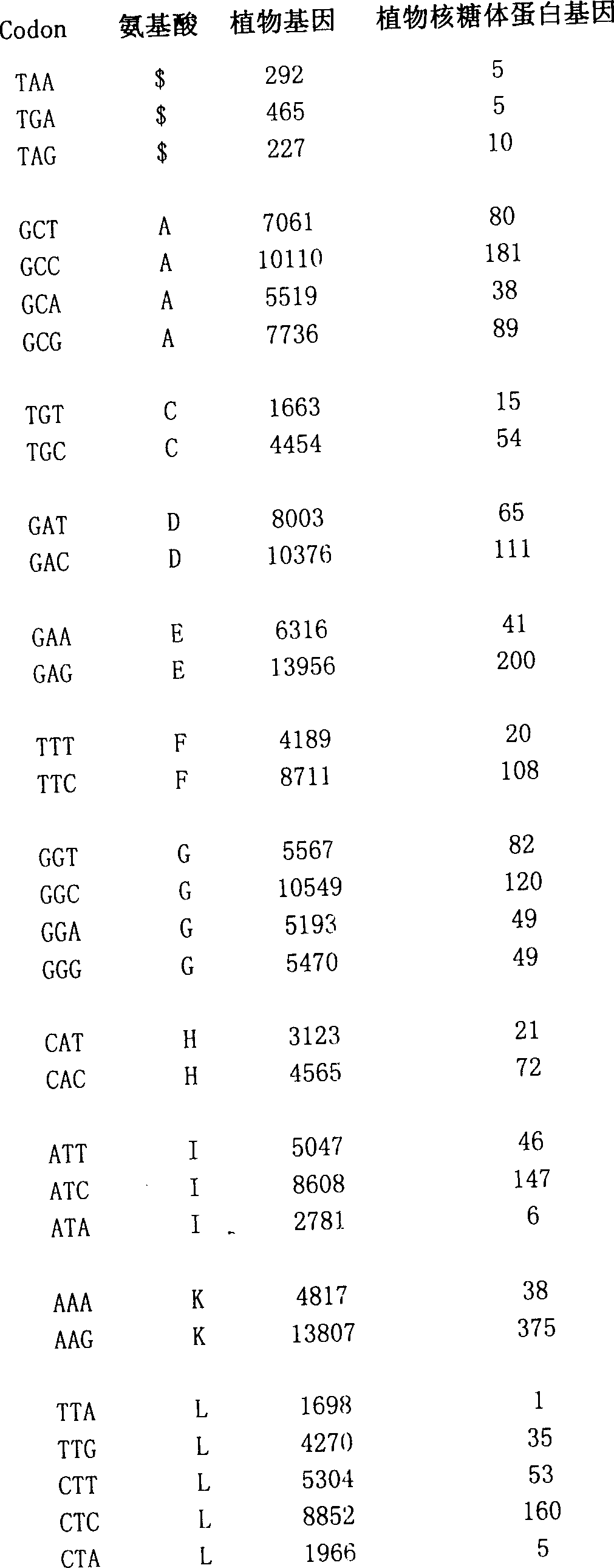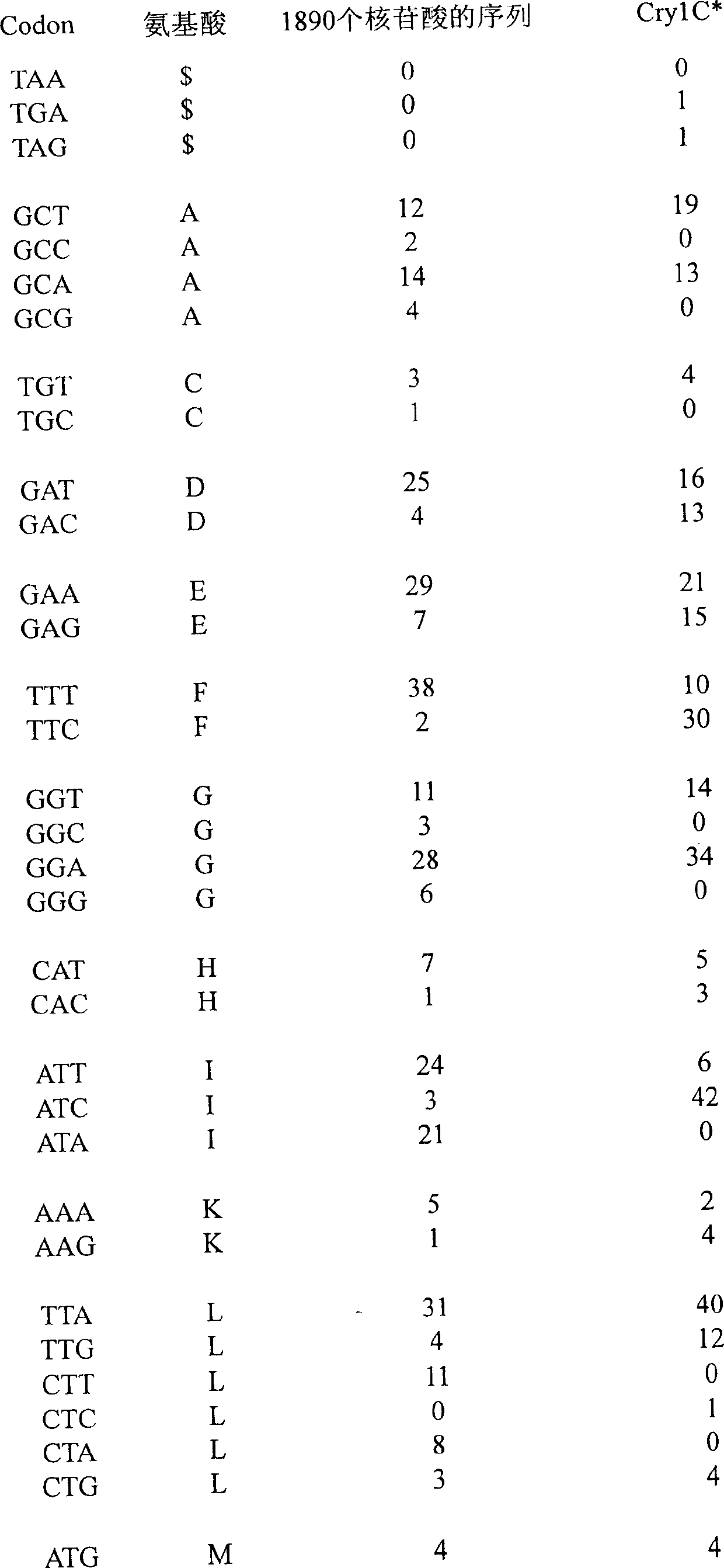Engineering systhesized gene cry LC of pests-killing crytal protein of Bacillus thuringiensis Berliner
A Bacillus aureus, gene technology, applied in the field of genetic engineering, can solve the problems of low expression of Bt gene, difficult to detect mRNA, unstable mRNA, etc.
- Summary
- Abstract
- Description
- Claims
- Application Information
AI Technical Summary
Problems solved by technology
Method used
Image
Examples
Embodiment 1
[0035] Example 1 Analysis of plant gene codon preference:
[0036] Take 984 plant gene coding sequences and 20 highly expressed plant ribosomal protein gene coding sequences from Genbank, and calculate the codon usage frequency respectively as shown in Figure 1. It can be seen that the third wobble base of the codon of plant genes prefers to use G or C.
Embodiment 2
[0037] Example 2: Cry1C * Comparison of codon characteristics between the coding sequence and the 1890 nucleotide sequence at the 5'end of the original Cry1Ca5
[0038] Searching for Cry1Ca sequences from Genbank, a total of 6 were obtained, namely Cry1Ca1, Cry1Ca2, Cry1Ca3, Cry1Ca4, Cry1Ca5 and Cry1Ca6. Cry1Ca5 with the shortest sequence was selected, and its 3'-end coding sequence was partially removed, and the 5'-end coding sequence of 1890 nucleotides of 630 amino acids was retained. According to the statistical results in Table 1, the high frequency codons used in plant genes were used to partially replace the corresponding codons of the 1890 nucleotide sequence, and to partially remove the AT-rich and ambiguous intron sequences such as ATTTA and AATGAA, and Exclude large inverted repeats and commonly used restriction endonuclease recognition site sequences in genes; design target synthetic Cry1C * The coding sequence of the gene is shown in SEQ ID NO:1 in the sequence listin...
Embodiment 3
[0039] Example 3 Synthetic Cry1C * Characteristic analysis of coding sequence
[0040] The 1890 nucleotide sequence of the original Cry1Ca5 and the synthetic Cry1C * The coding sequence was analyzed by Blast2, and the homology of the two sequences was 84.0%. The statistical results of base composition are: the C+G% of the original gene is 36.55%, and the C+G% of the newly synthesized gene is 44.62%. Blast2 analysis of the encoded amino acid sequences showed that the amino acid sequences encoded by the two were completely identical.
PUM
 Login to View More
Login to View More Abstract
Description
Claims
Application Information
 Login to View More
Login to View More - R&D
- Intellectual Property
- Life Sciences
- Materials
- Tech Scout
- Unparalleled Data Quality
- Higher Quality Content
- 60% Fewer Hallucinations
Browse by: Latest US Patents, China's latest patents, Technical Efficacy Thesaurus, Application Domain, Technology Topic, Popular Technical Reports.
© 2025 PatSnap. All rights reserved.Legal|Privacy policy|Modern Slavery Act Transparency Statement|Sitemap|About US| Contact US: help@patsnap.com



